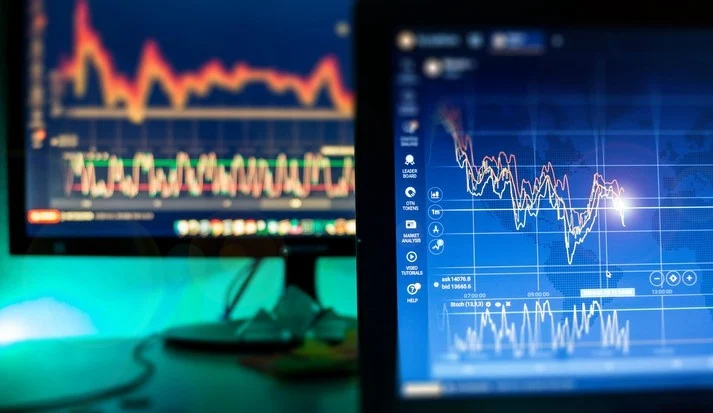
With the increase in global markets, many traders have been focusing on CFD index trading as an effective way to generate potential returns. However, most potential investors may need to be fully aware of this form of investment’s advantages.
In this article, we will discuss the various opportunities and benefits available through CFD index trading – such as higher liquidity levels, more comprehensive ranges of assets for diversification in portfolio management strategies, and lower costs compared with other forms of investing – by exploring real-life examples from experienced traders. We hope you find it informative.
Introducing CFD Index Trading

CFD index trading has been gaining momentum in recent years and for good reason. This trading method allows investors to take advantage of changes in the overall market without purchasing individual stocks. Essentially, CFD index trading tracks the performance of a basket of stocks, providing a more diverse and balanced approach to investing. Not only can it offer potentially higher returns, but it also carries lower costs and fees.
With CFD index trading, investors can capitalize on the performance of entire industries and sectors rather than relying on the success of a single company. As this approach gains more attention, it may be the investment solution you’ve been looking for. ADSS Indices, for example, offers a range of indices that cover global markets and countries.
Benefits of CFD Index Trading
By trading CFD indices, investors can gain exposure to the financial performance of a wide range of stocks and benefit from lower costs and increased liquidity.
The main benefit of CFD index trading is its lower costs. In comparison to other forms of investing, such as stocks and mutual funds, CFDs are generally more affordable. It is because no buying or selling fees may apply when using a CFD platform. Furthermore, traders are only expected to make small deposits to open trades on indices, which can benefit those who do not have large sums of capital available for investment.
Another key benefit of this type of trading is the higher liquidity levels CFDs offer compared to traditional investments. With fewer restrictions on the amount of money used for transactions, trades can be completed faster and more conveniently. Increased liquidity also comes with reduced risk, as investors are not required to wait for buyers to exit their positions.
Finally, CFD index trading allows traders to diversify their portfolios. It can be beneficial when attempting to manage risk and maximize potential returns over the long term. By trading a more comprehensive range of assets, investors can reduce exposure to any single company or industry – making it an ideal solution for diversifying their portfolios.
Leveraged Trading – How to Maximise Your Gains

Leverage is one of the main benefits CFD index trading offers, as it allows traders to take more significant positions with a smaller amount of capital. It can benefit traders who wish to maximize their gains but are limited by the amount of money available for investment.
Leverage also carries greater risk and should always be used cautiously. While it allows you to potentially increase your returns, it can also lead to higher losses if trades move in the wrong direction. Therefore, when using leverage, investors should fully understand their risk tolerance levels and how much capital they may lose on each trade.
Different Strategies You Can Use to Trade CFDs Successfully
First and foremost, developing a comprehensive plan before beginning your trading journey is essential. It means researching different sectors and markets to identify potential trends and opportunities for gains. Once these have been identified, traders should establish their risk management and position sizing criteria. By setting clear objectives in advance, investors can ensure that all trades are executed with discipline and consistency – helping them avoid costly mistakes.
In addition, technical analysis can be used when trading CFDs. By studying historical data and identifying patterns in price movements, traders can attempt to predict future market movements- helping them make more informed decisions when entering and exiting trades.
Finally, it’s important to remember that no two traders are the same, so it is essential to tailor strategies according to individual risk appetites and goals. By tailoring a trading strategy specifically for you, your chances of success will be significantly increased.
Managing Risks in CFD Index Trading

CFD Index Trading, while offering numerous benefits, also presents significant risks that must be strategically managed. Risk management in CFD trading involves identifying potential threats and implementing measures to mitigate losses.
A well-thought-out risk management strategy often includes setting stop-loss orders, diversifying the portfolio across different market indices, and closely monitoring market trends. Utilizing technical analysis to understand market patterns, applying position sizing to avoid overexposure, and maintaining a proper risk-to-reward ratio can aid traders in reducing risks.
Education and continuous learning are paramount, as the trading environment is always evolving. Risk management is not just about protecting funds; it is about creating a trading strategy that aligns with the trader’s risk tolerance, market perspective, and financial goals.
Technology and Tools in CFD Index Trading
Having access to the right technology and tools can be a game-changer in CFD Index Trading. The use of advanced trading platforms provides traders with real-time market data, charting tools, and analytical resources, all of which are essential for making informed trading decisions.
Automated trading systems can execute trades at high speeds, allowing traders to capitalize on short-term market movements. Simulators or demo accounts provide a risk-free environment for honing skills and testing strategies.
Proper utilization of tools like MetaTrader, TradingView, or customized trading algorithms can increase efficiency, enhance accuracy, and even provide psychological advantages by reducing emotional trading decisions.
Conclusion
CFD index trading is gaining traction as an effective and cost-effective way to generate potential returns. By capitalizing on the performance of entire industries and sectors, traders can benefit from increased liquidity, lower costs, higher returns, and diversification compared to other investing forms. It’s important to remember that CFD trading carries risk – so always use caution when leveraging and developing a trading strategy.









